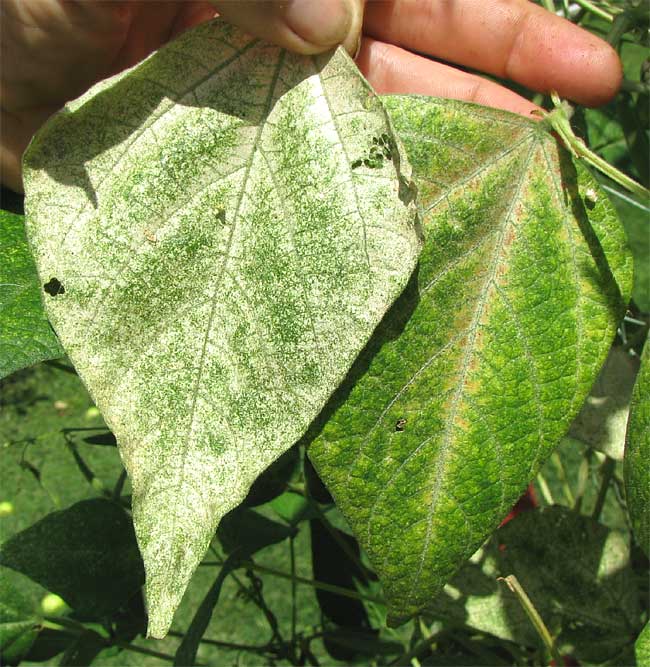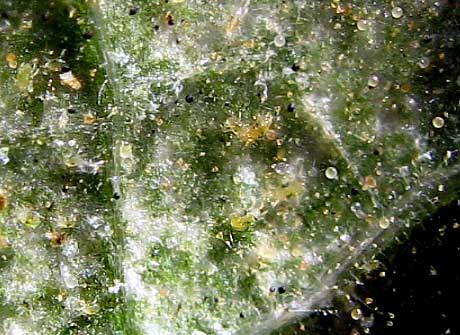Excerpts from Jim Conrad's
Naturalist Newsletter

from the September 20, 2009 Newsletter, issued from the Siskiyou Mountains west of Grants Pass, Oregon:
SICK SNAPBEAN LEAF DIAGNOSIS
Leaves on our snap bean vines look pretty bad, as seen above. Here was my approach to diagnosing the problem:
First, it didn't look like a nutritional disease because symptoms of nutritional deficiencies typically don't gather in such tiny, randomly spaced and mutually isolated spots. Nutritional diseases may affect whole leaves or create broad streaks, but in the picture it looks like one cell might be dead while the cell next to it is healthy.
Next I thought about viruses, and in fact some virus mosaic diseases cause symptoms a lot like this. I used Google's image search option looking for pictures answering to the keywords "snap bean viruses." Bean Common Mosaic Virus looked good, but the written description said that bean pods usually are stunted and deformed, while our beans looked OK.
Fungal diseases next came to mind, but when I examined leaves in more advanced stages of deterioration I couldn't find reproductive structures, which typically show up as black specks when leaves are held against the bright sky.
However, while searching with my handlens for those black specks on a leaf's underside I spotted something much smaller than the smallest aphid. Of course: Mites! This time I did a search on "bean diseases mites" and came up with lots of pictures of leaves just like ours. A page said that the tiny mites roam bean leaf undersides, often leaving silken, weblike zones around them to help them get around. Using my camera's 10X macro lens and pushing PhotoShop to its limit I came up with the shot of a leaf's undersurface, shown below:

There you can see some cream-colored mites not visible to my unaided eyes. Also some white zones which I assume to be the webs, and some white spheres, which are eggs. I'm guessing that this is the commonly occurring Two-spotted Spider Mite, TETRANYCHUS URTICAE, said to thrive in hot, dry weather exactly like what we've had for months. They can be controlled during their early stages by applying soapy water, and individual leaves can be sprayed with water to knock them off. Ladybugs eat them, too.